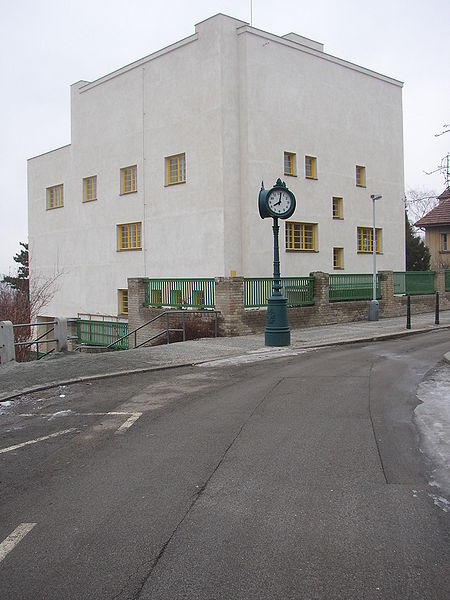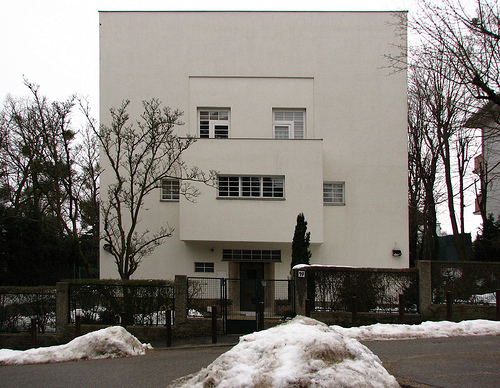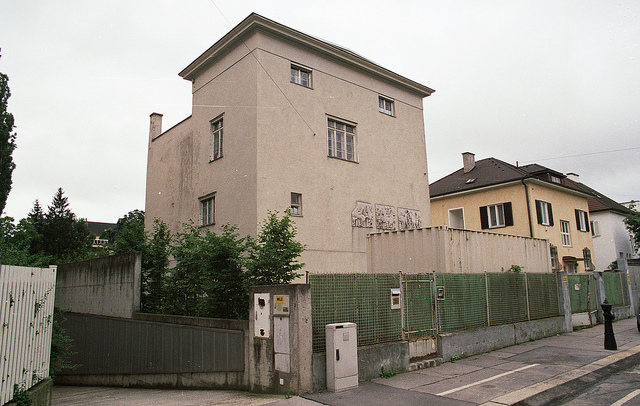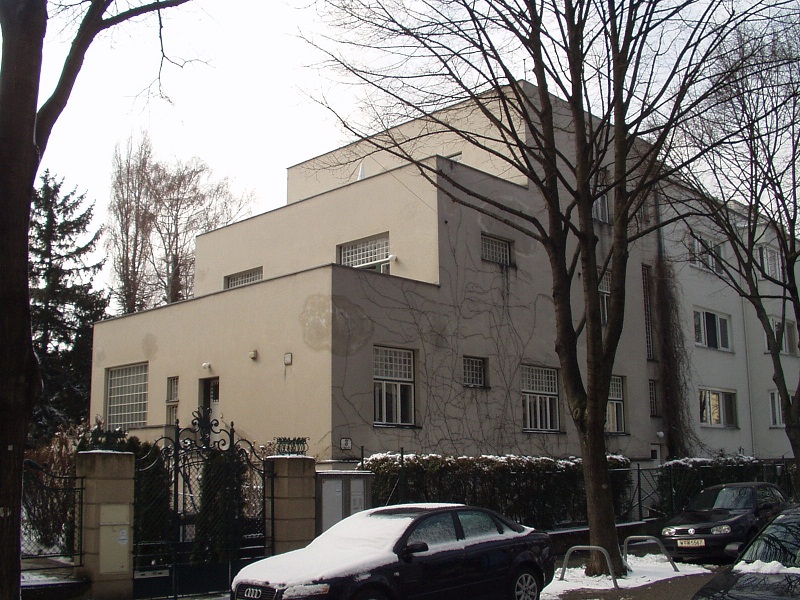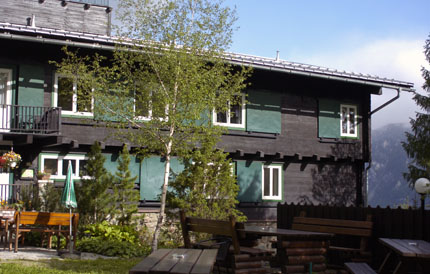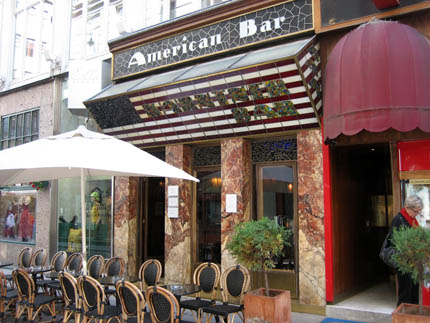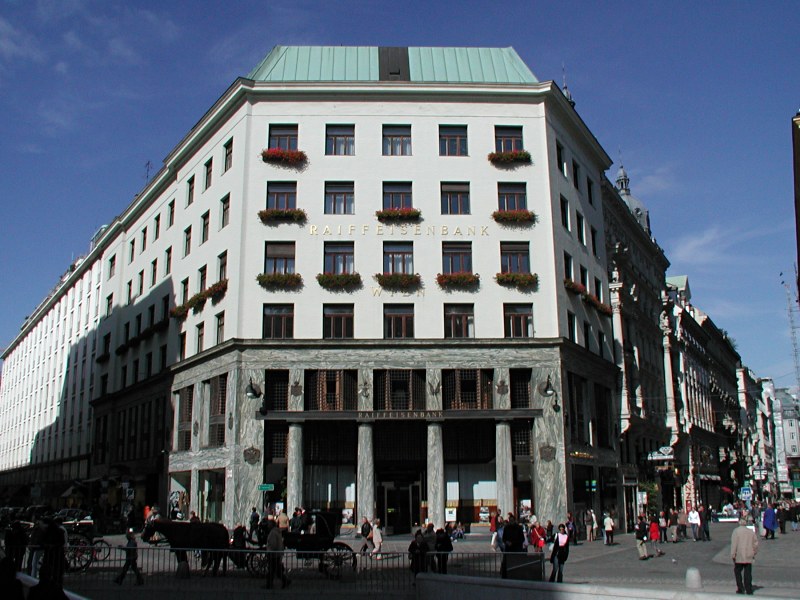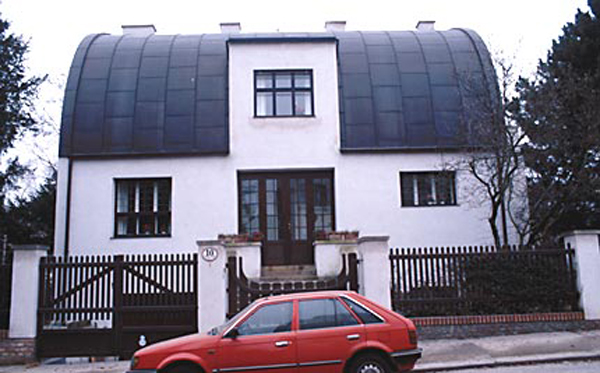<Back to Index>
- Philosopher Otto Neurath, 1882
- Architect Adolf Franz Karl Viktor Maria Loos, 1870
- Minister of Foreign Affairs Andrey Januaryevich Vyshinsky, 1883
PAGE SPONSOR

Adolf Franz Karl Viktor Maria Loos (10 December 1870 – 23 August 1933) was a Moravian born Austrian architect. He was influential in European Modern architecture, and in his essay Ornament and Crime he repudiated the florid style of the Vienna Secession, the Austrian version of Art Nouveau. In this and many other essays he contributed to the elaboration of a body of theory and criticism of Modernism in architecture.
Born in 1870 in Bruenn (Brno), Moravia, to an ethnically German family, Loos was only nine when his stonemason father died. He completed technical school in Liberec, Czech Republic, which is now Technical University Liberec (a plaque located in front of Pavilion H commemorates this) and later studied at Dresden Technical University before moving to Vienna. He contracted syphilis in the brothels of Vienna, and by age 21 he was sterile; in 1893 his mother disowned him.
Loos stayed in America for three years, where he had an uncle living in Philadelphia. He visited the 1893 Columbian Exposition in Chicago, and appreciated the work of Louis Sullivan. He visited St. Louis and did odd jobs in New York. Somehow, Loos found himself in that process and returned to Vienna in 1896 a man of taste and intellectual refinement, immediately entering the Viennese intelligentsia. His friends subsequently included Ludwig Wittgenstein, Arnold Schönberg, Peter Altenberg and Karl Kraus. He quickly established himself as the preferred architect of Vienna’s cultured bourgeoisie.
Diagnosed with cancer in 1918, his stomach, appendix and part of his intestine were removed. For the rest of his life he could only digest ham and cream. His personal life was tumultuous. In July of 1902, Loos married 21 year old Carolina Catherina Obertimpfler (Lina), a drama student. The brief marriage ended in 1905 in disaster and in a public scandal. In 1919, Loos married 20 year old Elsie Altmann, a dancer and operetta star and the Austrian born daughter of Adolf Altmann and Jeannette Gruenblatt. They divorced seven years later. Loos married his third wife, writer and photographer Claire Beck, in 1929. She was the daughter of his clients Otto and Olga Beck, and thirty-five years his junior. They were divorced on April 30, 1932. Following their divorce, Claire Beck Loos wrote Adolf Loos Privat, a literary work of snapshot like vignettes about Loos’ character, habits and sayings, which was published by the Johannes - Presse in Vienna in 1936. The book was intended to raise funds for Adolf Loos’ tomb.
By the time he was fifty he was nearly deaf and required people to speak to him through an ear horn. In 1928 he was disgraced by a paedophilia scandal and at his death in 1933 at 62 he was penniless. He died in Kalksburg near Vienna. Following his death in 1933, Loos’ body was moved to Vienna’s Zentralfriedhof to rest among the great artists and musicians of the city – including Arnold Schoenberg, Peter Altenberg, and Karl Kraus, all some of Loos’ closest friends and associates.
To understand fully Loos’s radical, innovative outlook on life -- his admiration for the classical tradition, his passion for all aspects of design, lifestyle and taste, and the breadth of his ideas -- it is essential to read his own collected writings, which were published by MIT press in English as Spoken into the Void in 1982. In his essays, Loos was fond of using the provocative catch phrase and has become noted for one particular essay / manifesto entitled Ornament and Crime, written in 1908, in which he repudiated the florid style of the Vienna Secession, the Austrian version of Art Nouveau.
In this essay, he explored the idea that the progress of culture is associated with the deletion of ornament from everyday objects, and that it was therefore a crime to force craftsmen or builders to waste their time on ornamentation that served to hasten the time when an object would become obsolete. Perhaps surprisingly, Loos's own architectural work is often elaborately decorated. The visual distinction is not between complicated and simple, but between "organic" and superfluous decoration.
Loos was also interested in the decorative arts, collecting sterling silver and high quality leather goods,
which he noted for their plain yet luxurious appeal. He also enjoyed
fashion and men's clothing, designing the famed Knize of Vienna, a haberdashery. Loos,
through his writings and his groundbreaking projects in Vienna and the
major cities of the Czech Republic, was able to influence other
architects and designers. His careful selection of materials and use of
'Raumplan' -- the considered ordering and size of interior spaces based
on function -- are still admired today. In
October 2008, an exhibition on Adolf Loos's work opened in the City of
Prague Museum, examining his often overlooked achievements in the Czech
Republic. The exhibition traveled to London as "Learning to Dwell: Adolf Loos in the Czech Lands" at the Royal Institute of British Architects.
It opened on 24 February 2011 accompanied by a season of talks and a
display on the role of the RIBA in saving Loos's archive during the Second World War.
